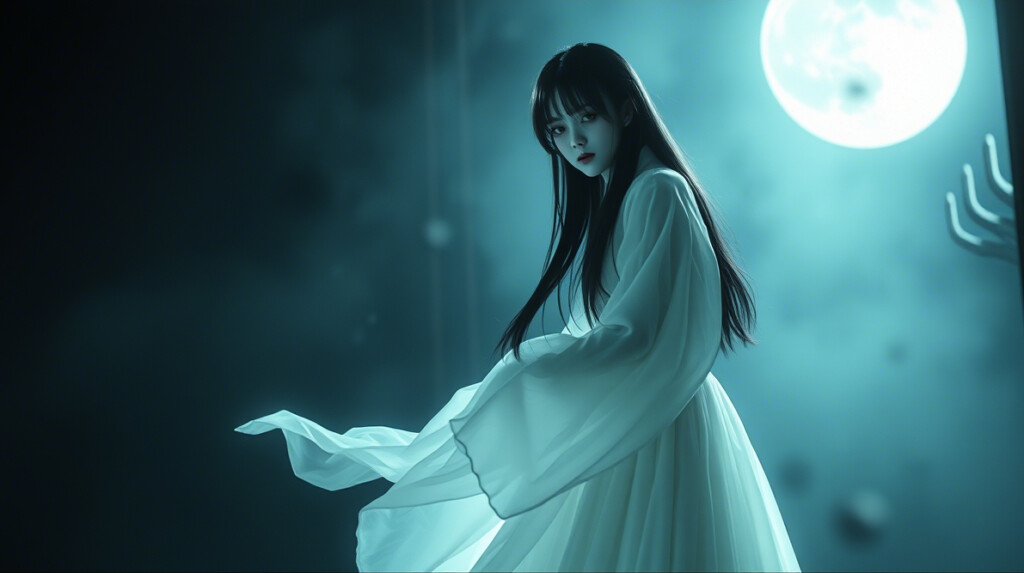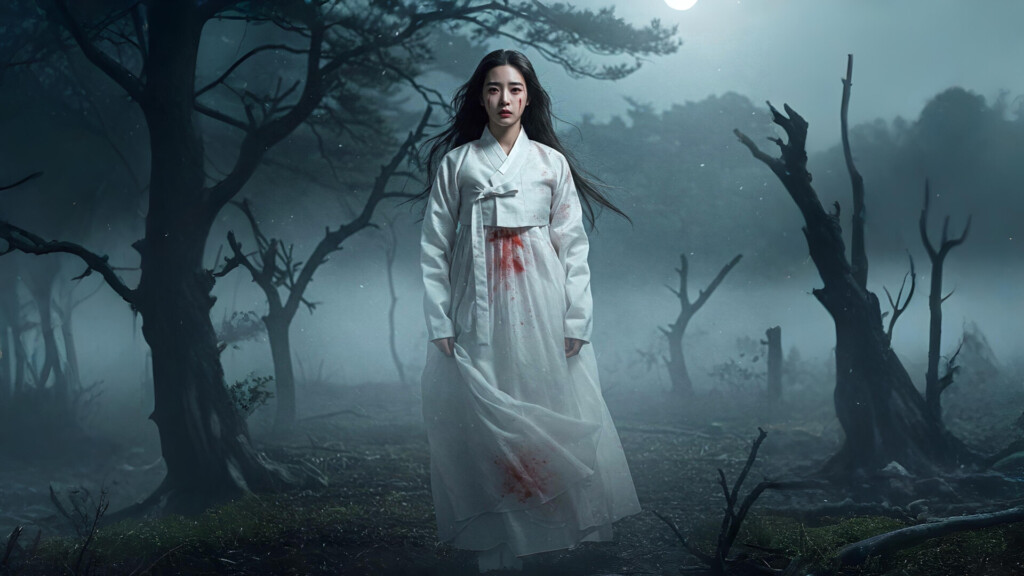Have you ever heard the wind howling through a crack in the door, resembling a mournful wail? Or, in the dead of night, caught a glimpse of a white figure gliding past, its presence chilling you to the bone? In Korea, many believe these could be Cheonyeo Gwishin—the restless spirits of virgin maidens, forever lingering in the mortal realm, burdened by an unrelenting sorrow.

Of course, not everyone believes in the spectral existence of Cheonyeo Gwishin, but certain folktales and eerie encounters make people reconsider.
One of the most infamous haunted locations in South Korea is the Gonjiam Psychiatric Hospital in Gwangju, often whispered about in connection with Cheonyeo Gwishin. According to local lore, in the 1990s—before the hospital was abandoned—a young female patient took her own life in Room 402 after enduring immense suffering (some say she was mistreated or abandoned). After the hospital was deserted, thrill-seekers and ghost hunters began reporting sightings of a girl in white, her long hair covering her face, standing by the window of Room 402. Others claimed to hear soft weeping in the dead of night. A few even recounted feeling as if an unseen force was trying to “lead” them somewhere, leaving them paralyzed with fear.
While no official records confirm this girl’s death, the legend grew so powerful that Gonjiam became one of Korea’s most notorious haunted places. In 2018, the horror film Gonjiam: Haunted Asylum was inspired by these chilling stories, featuring a vengeful ghost bearing the classic traits of a Cheonyeo Gwishin: white hanbok, long disheveled hair, and an overwhelming aura of resentment.
📌 Seoul, 2017 – A university student recounted an unsettling experience on the rooftop of his dormitory. He spotted a girl standing there at midnight, her hair flowing in the wind, dressed in a traditional white hanbok. Assuming she was cosplaying, he approached her. But as she turned to face him—there were no eyes, no nose, no mouth. Just a void of endless darkness.
📌 Gyeonggi, 2021 – A man living alone constantly felt an eerie presence watching him through the bathroom mirror. One night, he decided to record himself. When reviewing the footage, he saw himself combing his hair… but there was another hand, combing his hair alongside him.
Whether mere folklore or chilling reality, if you ever find yourself alone and feel an unshakable sense of being watched—can you be certain you truly are alone?
The Tragic Origins of Cheonyeo Gwishin
These spectral maidens are said to be women who died before experiencing love, marriage, or fulfillment—lives cut short by war, disease, accidents, or even forced marriages. As documented in Behind the Myth: Korean Ghosts by Gwangju News, these spirits harbor unresolved sorrow and bitterness, unable to transition peacefully into the afterlife. Dreams shattered, love unfulfilled, and futures stolen—their lingering resentment binds them to the living world.

Rather than fearing or banishing these spirits, Koreans often seek to soothe their suffering. Offerings are made, prayers are whispered, and rituals are conducted to guide them toward peace.
At Haesindang Park, statues have been erected in honor of these lost souls, offering prayers for their safe passage. In some regions, symbolic “ghost marriages” are held, fulfilling their unfulfilled destinies and granting them closure.
Most notably, the “gut” (굿) ritual—a traditional shamanistic exorcism—is performed to appease wandering spirits, easing their anguish and helping them finally cross over.
More Than Just Ghost Stories: A Reflection of Society
The legend of Cheonyeo Gwishin is more than just a ghostly tale—it is a reflection of the deep-seated injustices faced by women in Korea’s patriarchal past. These spirits embody silenced voices, buried desires, and the unspoken pain of those who were denied agency over their own lives.
In a society where virginity was once valued above life itself, dying unwed and untouched meant eternal loss—of honor, family, and even the chance for peace in the afterlife.
Cheonyeo Gwishin in Modern Pop Culture
The haunting image of Cheonyeo Gwishin is deeply embedded in Korean horror films, literature, and pop culture. The critically acclaimed horror movie A Tale of Two Sisters (2003) masterfully captures this lingering presence of sorrowful spirits. More recently, the Hotel Del Luna (2019) series reinterpreted this myth to tell stories of unfinished fates and lingering regrets.
Through these portrayals, Cheonyeo Gwishin are not just figures of terror, but symbols of deeper moral and emotional dilemmas—urging audiences to confront themes of compassion, justice, and the unrelenting echoes of the past.
Rather than simply fearing them, Koreans continue to acknowledge, respect, and seek peace for these lingering spirits. Beyond superstition, this practice reflects a culture that values empathy and remembrance, even for those long departed.
